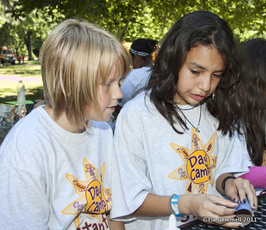ABOUT US...

Stanford Settlement Neighborhood Center is a not-for-profit social service organization serving the North Sacramento, California neighborhoods where opportunities are limited. The mission of the agency is to help build healthy communities through individual, family and neighborhood services. Its goal is to provide programs, services and opportunities that will enhance the lives of disadvantaged and disenfranchised individuals and families. Program emphasis is placed on those whose opportunities and capabilities are limited by personal, social or economic circumstances. Stanford Settlement offers a variety of critical programs and services, for residents of the Gardenland/Northgate, North Sacramento, and Natomas communities. From After School Groups and Summer Day Camp for children, a Teen Center program for youth, and a comprehensive Senior Center, there is something for everyone.
Please take some time to click the above links and read more about the services we offer.
WHAT IS STANFORD SETTLEMENT?
Stanford Settlement is a neighborhood center or settlement. That means: A “continuing effort of a group of people interested in and concerned about the development of a neighborhood.”
This is different than many other agencies that deal with specific problems such as mental health centers, day care centers, homes for the aged, etc. We deal with a specific neighborhood. We are in the business of helping people learn how to live together and to secure good living conditions.
The area or neighborhood we serve has high rates of:
- Unemployment, sub-standard housing
- Poverty, low-income
- Senior citizens and youth
WHAT WE DO
We provide very basic social work services (that is….helping people function effectively and acceptably in society) by helping people learn:
- How to use resources.
- How to plan.
- How to participate in cooperative decision-making.
These services and activities cover all age groups and include a variety of methods. They are family oriented. They are designed to help people enhance their lives by learning how to use existing resources within the community and within themselves, by learning how to plan, by participating in meaningful activities.